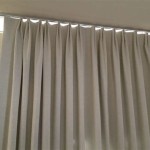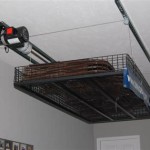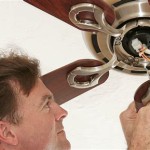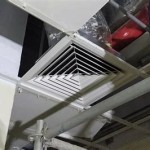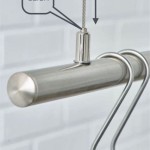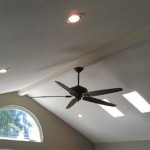How To Put Crown Molding On A Vaulted Ceiling
Installing crown molding on a vaulted ceiling presents a unique set of challenges compared to a standard flat ceiling. The angles inherent in vaulted ceilings require precise measurements and cuts to ensure a seamless and aesthetically pleasing finish. This article provides a detailed guide on how to successfully install crown molding on a vaulted ceiling, covering everything from planning and preparation to cutting and installation techniques.
Understanding Vaulted Ceiling Geometry
Before beginning any project involving crown molding on a vaulted ceiling, it is crucial to understand the geometry involved. Unlike a flat ceiling where corners are typically 90 degrees, vaulted ceilings introduce compound angles that must be accurately calculated. These angles affect both the miter and bevel settings on the miter saw, which are essential for creating tight-fitting joints. The degree of the vault's slope directly influences these angles, necessitating careful measurement and calculation.
A simple method for determining the ceiling's angle involves using an angle finder or a protractor to measure the angle between the two ceiling planes. Once the angle is determined, it can be used to calculate the necessary miter and bevel cuts for the crown molding. Several online calculators and charts are available that can assist in determining these angles based on the ceiling angle and the spring angle of the crown molding being used. The spring angle refers to the angle at which the crown molding sits against the wall and ceiling.
It is important to note that vaulted ceilings are rarely perfectly symmetrical or uniformly angled. Variations in the ceiling's angle can occur along its length, requiring frequent measurements and adjustments during the installation process. Small imperfections in the walls and ceiling can accumulate and affect the overall fit of the molding. Taking these factors into account and allowing for minor adjustments will improve the final outcome.
Preparation and Material Selection
Proper preparation is key to a successful crown molding installation. This includes gathering the necessary tools and materials, as well as preparing the surfaces to which the molding will be attached. A thorough preparation phase will minimize errors and ensure a professional-looking finish.
The essential tools required include a miter saw (preferably a compound miter saw), a measuring tape, a level, a stud finder, a pencil, a nail gun or hammer, safety glasses, and potentially an angle finder or digital protractor. A compound miter saw allows for both miter and bevel cuts to be made simultaneously, which is critical for cutting crown molding for vaulted ceilings. A nail gun will speed up the installation process and provide a secure attachment, but a hammer and nails can be used if a nail gun is not available.
The selection of crown molding material is also important. Common choices include wood, polyurethane, and MDF (medium-density fiberboard). Wood offers a traditional look and can be stained or painted, but it is susceptible to moisture damage and can be more expensive. Polyurethane is lightweight, moisture-resistant, and easy to cut, making it a good option for bathrooms or kitchens. MDF is less expensive than wood and provides a smooth surface for painting, but it is not as durable as wood or polyurethane.
Before beginning the installation, inspect the walls and ceiling for any imperfections, such as bumps or cracks. Fill any holes or cracks with spackle or joint compound and sand them smooth. This will provide a smooth and even surface for the crown molding to adhere to. Use a stud finder to locate the wall studs and mark their locations, as these will provide the most secure points for attaching the molding. Pre-priming the crown molding before installation can also save time and improve the adhesion of the paint.
Cutting Crown Molding for Vaulted Ceilings
Cutting crown molding for a vaulted ceiling requires precision and accuracy. The complex angles involved can be challenging, but with careful planning and execution, it is possible to achieve professional-looking results. Understanding the different types of cuts and how they relate to the ceiling angle is crucial.
The primary cuts required for crown molding installation are miter cuts and bevel cuts. A miter cut refers to the angle cut on the face of the molding, while a bevel cut refers to the angle cut on the edge of the molding. For inside corners on a vaulted ceiling, the miter and bevel cuts will typically be different from those used for outside corners. As stated previously, online calculators can assist in determining the appropriate miter and bevel angles based on the ceiling angle and the crown molding's spring angle.
When cutting crown molding, it is essential to use the "nested" method. This involves placing the crown molding against the fence and table of the miter saw in the same orientation as it will be installed on the wall and ceiling. This ensures that the angles are cut correctly. For inside corners, the molding should be placed upside down and backwards on the saw, with the bottom edge against the fence and the top edge against the table. For outside corners, the molding should be placed right side up and forwards on the saw.
Before making any final cuts, it is recommended to practice on scrap pieces of crown molding. This will allow for fine-tuning of the miter and bevel angles and minimize the risk of wasting expensive material. Make sure the molding is securely clamped to the miter saw before cutting to prevent it from shifting and resulting in inaccurate cuts. It's best to cut slightly long, and then test the fit. You can always trim away small amounts to get the fit perfect. Use sandpaper or a utility knife to smooth the cut edges for a clean, professional look.
Installation Techniques
Once the crown molding has been cut to the correct angles, the next step is to install it on the vaulted ceiling. Proper installation techniques are essential for ensuring a secure and aesthetically pleasing finish. This involves attaching the molding to the wall and ceiling, filling any gaps, and finishing the surface.
Begin by attaching the longest pieces of crown molding first. This will make it easier to align the smaller pieces and ensure that the overall layout is correct. Use a nail gun or hammer and nails to attach the crown molding to the wall studs and ceiling joists. The nails should be long enough to penetrate the framing members by at least one inch. Position the nails at an angle to provide a stronger hold. For greater stability, construction adhesive can be applied to the back of the crown molding before it is attached to the wall and ceiling.
When installing the crown molding, it is important to maintain a consistent reveal. The reveal refers to the distance between the top edge of the crown molding and the ceiling, as well as the distance between the bottom edge of the crown molding and the wall. Use a level to ensure that the crown molding is installed straight and level along its length. If the ceiling or walls are uneven, it may be necessary to shim the crown molding to achieve a consistent reveal.
After the crown molding has been installed, inspect the joints for any gaps or imperfections. Fill any gaps with paintable caulk or wood filler. Apply the caulk or filler smoothly and evenly, and then wipe away any excess with a damp cloth. Once the caulk or filler has dried, sand it smooth to create a seamless transition between the crown molding and the wall or ceiling. Finally, prime and paint the crown molding to match the surrounding surfaces. Apply multiple coats of paint for a durable and professional-looking finish.
Addressing long runs of crown molding requires careful planning due to the limitations of material length. When a single piece of molding cannot span the length of the wall or ceiling, scarf joints are necessary. A scarf joint involves cutting two pieces of molding at opposing angles (typically 45 degrees) and joining them together to create a seamless transition. Position scarf joints away from high-visibility areas to minimize their appearance. Secure scarf joints with adhesive and nails, and fill any gaps with wood filler. Sand the filled joints smooth to create a uniform surface.

How To Install Crown Molding On A Vaulted Cathedral Ceiling Without Transition Piece

How To Install Crown Molding On Vaulted Or Cathedral Ceilings The Joy Of Moldings

Installing Crown Moulding Part Two Canadian Woodworking

Crown Molding On Angled Ceilings Makely

Installing Crown Moulding On A Sloped Ceiling Doityourself Com Community Forums

Installing Crown Molding Around A Cathedral Ceiling Fine Homebuilding

Installing Crown Molding On A Vaulted Ceiling Pro Construction Guide

Install Crown Molding Cathedral Vaulted Ceiling

Can You Put Crown Molding On A Vaulted Ceiling Hometalk

How To Install Crown Molding On Vaulted Or Cathedral Ceilings The Joy Of Moldings
Related Posts

